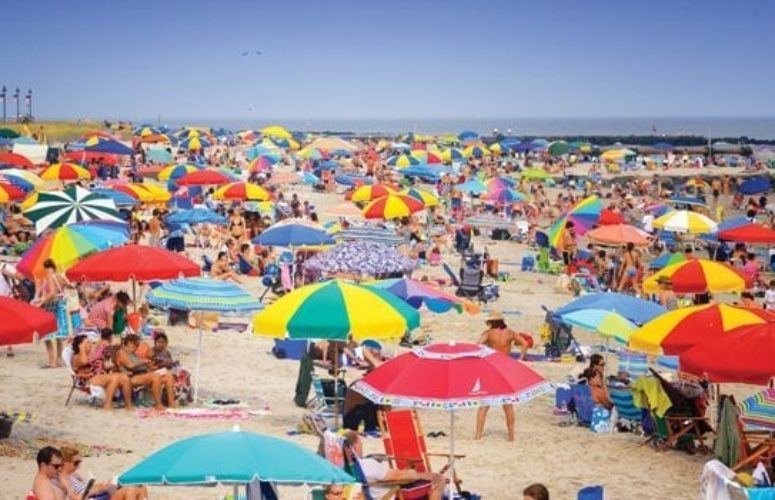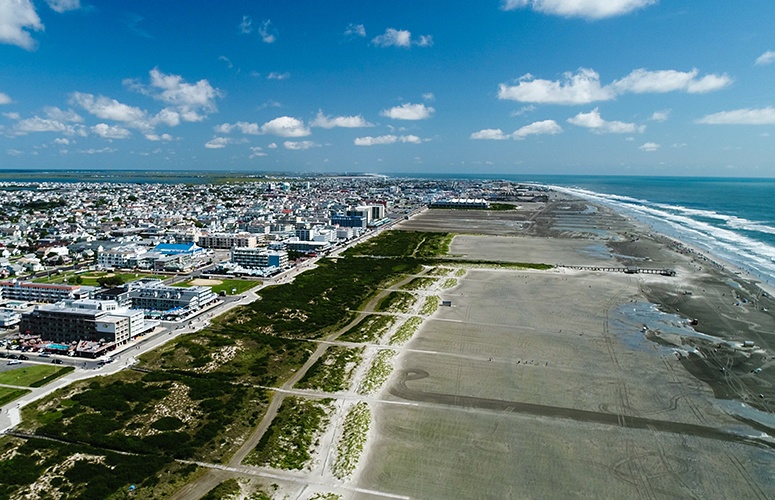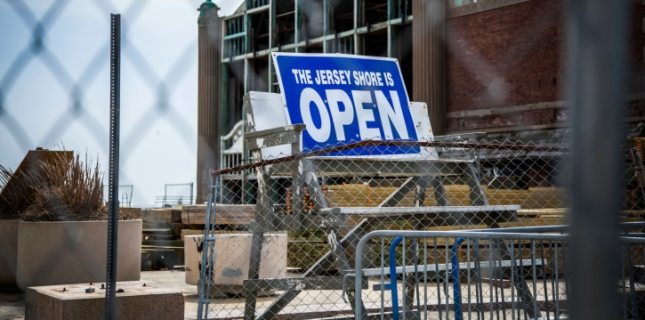
Tourism’s Economic Impact Shows Unexpected Growth After Sandy
Industry and state pull together to prove that New Jersey is still the place to visit and vacation.
By Anthony Birritteri, Editor-in-Chief On May 12, 2014Last year, everyone who had a stake in New Jersey’s shore tourism industry was concerned that the aftermath of Superstorm Sandy would severely impact business. Operators of inland attractions were just as concerned because in listening to national news reports, it appeared as if all of New Jersey was devastated. The Garden State was not the place to visit in 2013 … or so it seemed.
Last year was a year of rebuilding boardwalks, amusement rides and piers, restaurants and bars, shore rentals, homes and hotels. It was a year of banding together and marketing the state to everyone that New Jersey’s tourism destinations were open for business. And when Lt. Governor Kim Guadagno released the annual tourism economic impact report at this year’s New Jersey Conference on Tourism, held recently in Atlantic City, the state proved to everyone how resilient it is.
The industry set a new record last year, generating more than $40.4 billion in overall tourism-related demand, a 1.3 percent increase from 2012. Additionally, visits in New Jersey rose to 8.7 million in 2013, a 5.9 percent increase from the previous year.
“If there was ever a time to lower expectations in the industry, it was last year,” said the Lt. Governor. “Virtually every part of the state was impacted by the storm and every single boardwalk was either gone or damaged. All of us, in the Division of Travel and Tourism, were scared. We were concerned that people would not come back to New Jersey.
“Grace Hanlon (executive director of the New Jersey Division of Travel and Tourism) and a lot of other smart people worked hard to get the message out that we were open for business,” Guadagno continued.
She thanked the tourism industry professionals gathered at the conference for their hard work in keeping the industry vibrant, stating, “All of you exceeded the challenge of a lifetime.”
In looking at other numbers in the Economic Impact of Tourism Report, released by the Department of State, the travel and tourism industry directly supports 320,238 jobs, a .526 percent increase over 2012. When combined with indirect and induced jobs, industry related jobs exceeded 500,000, or 10 percent of all state jobs. Tourism also generated: $35.9 billion of state GDP, or 7 percent of the entire state economy; $4.6 billion in state and local taxes; and $5.2 billion in federal taxes.
In looking at four shore counties noted for tourism (Monmouth, Ocean, Atlantic and Cape May), Hanlon said that two counties increased tourism numbers while the other two held their own compared to 2012. She added that counties beyond the shore region are seeing an increase in tourism as well. “Morris County, for example, hit it out of the park this year with a 14.9 percent increase in revenues,” she said. “This is great news, as we are less dependent on a sole tourism resource for revenues. It confirms what we already know … that New Jersey offers a lot of diverse tourism options.”
Tourism Funding
In discussing tourism funding, the Lt. Governor said that in this year’s state budget, $1.5 million was set aside for grants to 14 destination marketing organizations (DMOs) in the state. Approximately $608,000 is made available for 41 co-op grants.
At the meeting of the New Jersey Travel Industry Association (NJTIA), the major discussion on state funding going forward revolved around increasing the “poison pill” level (the minimum $9 million the state must contribute towards tourism) from the Hotel/Motel Occupancy Fee. The state is scheduled to raise $106 million from the fee, according to Joe Simonetta, NJTIA executive director. Of that amount, $30 million goes towards arts and tourism. In past years, a high of $41 million went to the two sectors.
NJTIA is hoping that a bill, which would raise the poison pill amount for tourism and which, at press-time, is pending in the State House, will soon make it to the governor’s desk before he finalizes the state’s 2015 fiscal-year budget. It would increase the amount going to the arts and tourism to the previous $41-million level, over a three-year period.
Simonetta was honest and said that New Jersey’s budget problems are huge. “The administration is not against art history or tourism, it is just against increasing appropriations for anything outside the proposed budget ($34.4 billion). It is strictly the financial reality of the state,” he said.
Sharon Franz, NJTIA president, said the industry has been fortunate that the $9 million poison pill level has not been reduced in past years. “We look at that as a good thing, but we are moving forward in getting legislators and constituents to know about the importance of tourism and how much it saves us in taxes for every dollar spent.”
Bill Boyle III of Boyle Hotels, New Providence, and head of the NJTIA tourism funding committee, discussed an initiative under development that would not depend on the hotel tax. It would be a 1 percent assessment on all revenues generated by tourism-related businesses in the state. If the industry generated $40.4 billion in 2013, a 1 percent assessment would raise $404 million. “This would raise enough revenue for all of our purposes and it would be spread among the Division of Travel and Tourism, ArtsPride NJ, the DMOs … all of the relevant organizations currently drawing from the hotel tax,” Boyle said.
A NJTIA member in the audience brought up the possible caveat that the state could use this money for its own purposes, like the majority of the money raised by the hotel tax.
Boyle responded that the funding would have to be constitutionally granted for it not to be used for other purposes.
Though the initiative taxes the entire arts and tourism industry, Franz said it can bring more people into New Jersey, adding that surrounding states are spending so much more on their own tourism promotion efforts.
Two Years of Special Events
New Jersey was able to win some large events this year and last which have, and will, draw large crowds to the region, bringing in some millions of dollars in revenues. It started with WrestleMania 29 at MetLife Stadium in April 2013, which generated $101.2 million in economic impact for the New York/New Jersey region, according to a study by Enigma Research Corporation. It also generated $16.4 million in local, state and county taxes.
Then in September, the Miss America Pageant returned to Atlantic City’s Convention Hall after an eight-year absence. This year, the event, which celebrates its 60th anniversary of being broadcasted on television, will be held in Atlantic City on September 14th. It will be aired live on ABC-TV.
This past February, the state hosted its first Super Bowl, held at MetLife Stadium. Though final economic impact numbers are not known, the estimate leading up to the game was between $500 million and $600 million for the New York/New Jersey area. The game was expected to bring in 150,000 to 200,000 people to the region.
This summer, the 2014 Special Olympics USA Games will be held between June 14-21 at various venues in Mercer County (see related story in this issue), bringing in 3,500 athletes, more than 1,000 coaches and delegates, 10,000 volunteers and 70,000 spectators and family members. The economic impact of the games to the Central New Jersey region is expected to be $116.5 million.
Finally, the state is currently in the midst of celebrating its 350th anniversary, and a full array of events and celebrations are planned throughout the year. Anyone interested in finding out more about the various happenings related to this historic milestone can obtain a calendar of events at www.officialnj350.com.
On the successes and failures of the Super Bowl, Jim Kirkos, president and CEO of the Meadowlands Regional Chamber of Commerce and president and COO of the Meadowlands Liberty Convention & Visitors Bureau, tells New Jersey Business, “In some cases, the Super Bowl was everything we thought it would be, but in other cases, despite the fact that we tried to temper expectations, the game did not throw a blanket over the wholes state [in terms of everyone experiencing an economic boost].
“In speaking about the Meadowlands, we did pretty well. Our hotels, despite the fact they were not sold out, had a higher average daily rate, higher occupancy rate and higher revenue per available room (RevPAR) rate than year-over-year numbers. We had restaurants that were completely bought out for considerable amounts of money,” he said.
Discussing the bigger picture, Kirkos said, “We can proudly say we hosted the Super Bowl … think about the state’s ability of bringing in other big games because we can now say we hosted the biggest game in the world.“
Asked if the National Football League (NFL) treated the New Jersey and New York organizers and the local towns fairly, Kirkos responds, “The NFL brings a product to our backyard and says, ‘This is what we want from you. If you want to be the host, here are the rules.’
“The people who submitted the bid (the Giants and Jets and people like me) understood the rules, but the local people did not, so the NFL looks like the ogre. The fact is, they brought the game to us and we had an opportunity to win some business. They built the brand and stuck to their business plan.”
Related Articles:





